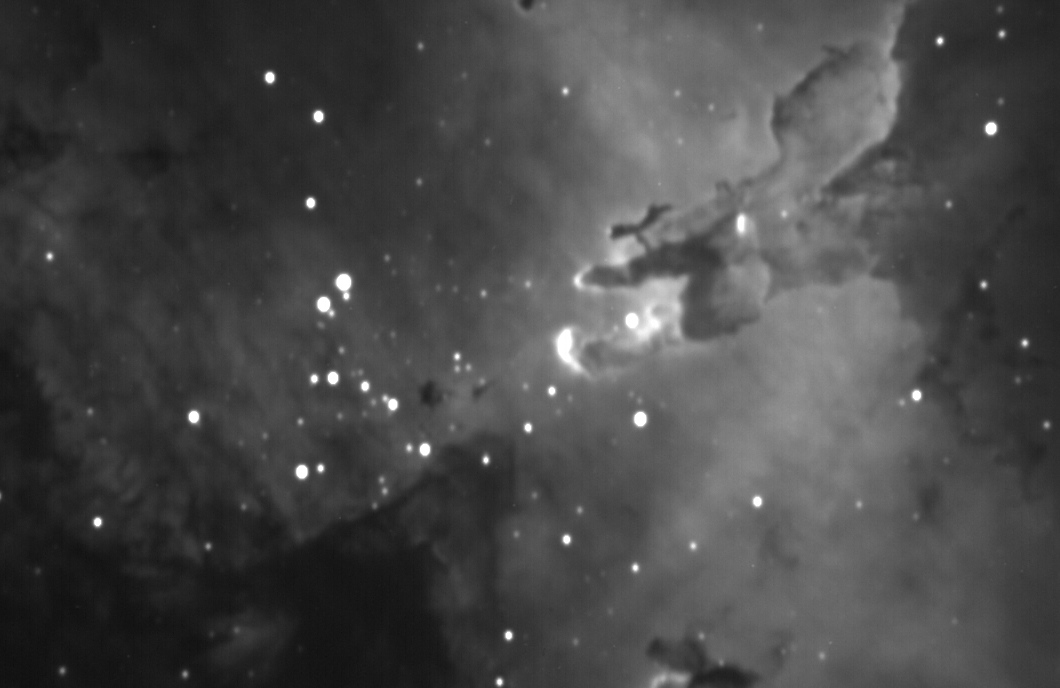M16 - Eagle Nebula in H-alpha

M16 - Eagle Nebula in H-alpha: The Eagle Nebula, which includes the "Pillars of Creation" are imaged here in H-alpha, a "red" emission line (656nm) of Hydrogen. In star forming regions, gravity pulls together clumps from the cloud of gas that collapse and form the stars. The first stars that form are the massive, bright blue stars near the center of the image. These emit lots of ultraviolet light, that then excites the hydrogen gas in the surrounding clouds. The intense radiation from these same stars is also "blowing away" the clouds - in direct competition with gravity. These competing forces give the "melting candle wax" appearance of parts of this nebula.
Messier: 16
NGC: 6611
Right Ascension: 18h 18.8m
Declination: -13° 47'
Apparent Magnitude: 6.4
Date: October 2007
Equipment:
Telescope: Meade 16" Schmidt Cassegrain
Camera: SBIG ST-10XE
Guiding: Meade 5" refractor/DSI Pro/PHD
6nm Astrodon H-alpha filter
Exposure: 16x3 minutes
Scale: ~0.65"/pixel
Links to images of this object on other sites:
http://apod.nasa.gov/apod/ap080719.html
http://www.astrocruise.com/milky_way/M16_02.htm
http://www.narrowbandimaging.com/images/m16_mk1sn2_dm_geg_cs4_ha_12x10min_svga.jpg
Additional Comments: This is the "first light" H-alpha image at the Fort Lewis observatory.
When excited electrons in a hydrogen atom decay from a higher excited state into the first excited state, the photons emitted are part of the Balmer series. The lowest energy transition in this series is going from the second to the first excited state, in which case a red, H-alpha (656.3nm) photon is emitted. Going directly from the third excited state to the first excited state, the atom will emit an H-beta photon (486.1nm). When an electron decays to the ground state, which is a much larger energy drop, an ultraviolet photon is emitted. For more information, see: http://en.wikipedia.org/wiki/Balmer_series
Views: 2943
 This work is licensed under a Creative Commons Attribution-NonCommercial-ShareAlike 4.0 International License.
This work is licensed under a Creative Commons Attribution-NonCommercial-ShareAlike 4.0 International License.

